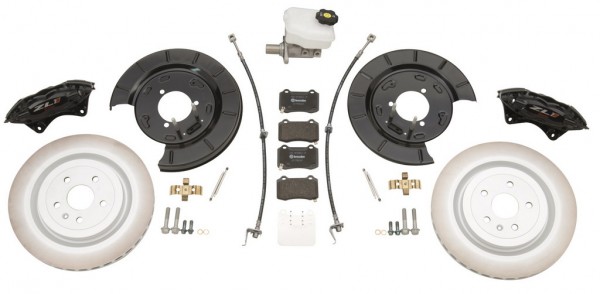
Nothing’s more satisfying than getting a great bargain on auto part replacements, especially from a reputable company like CarParts.com.
But if you’re shopping elsewhere, it can sometimes be difficult to tell authentic components apart from substandard copies. To help you out, read on for some tips and tricks to help you spot lower-quality car parts on the market.
Research the Going Price for Authentic Parts
Because substandard parts are significantly cheaper than authentic ones, they’re an attractive option for car owners looking for a good deal. In some cases, these lower-quality alternatives are sometimes sold for nearly half of the original’s asking price. With such huge potential savings, it’s no wonder why some people patronize them over original components. Even the most eagle-eyed consumers would find it difficult to resist such a bargain. But just because you’re minimizing your expenses doesn’t necessarily mean that you should always go for the cheapest option available. After all, there has to be a reason why they can offer the part for so little in the first place.
Indeed, rock bottom prices could indicate that the provider had to scrimp on certain stages of production, such as quality control or materials. Additionally, companies that sell substandard components typically don’t follow the same rigorous procedures as that of authentic manufacturers. Hence, always look up the average rate for an original component before making any purchases. A good rule of thumb to remember is that if the price seems too good, there’s probably a catch to it.
Compare It with the Original Part
Because lower-quality parts go through a different manufacturing process, they’ll often exhibit characteristics that can help you tell them apart from original components. So if you happen to have the stock car part on hand, it’s a good idea to compare it side-by-side with the new one you’re interested in buying. That way, you can tell whether you’re getting an authentic part or a poorly-made copy.
As for what to look out for, you’ll want to check for any inconsistencies in terms of texture, appearance, weight, and color, to name a few. For instance, some counterparts have a duller finish and a rougher texture, which may hint at lapses in production quality. Don’t forget to pay special attention to any logos or other branding marks on the product, too. In most cases, substandard components tend to have poorly-made logos with the wrong colors, fonts, or even spelling.
You may also notice that certain car parts are more often copied than others, specifically those that require frequent replacement. Examples include oil filters, lights, spark plugs, rotors, and brake pads. If you find any of these for sale at a low price, there’s a high chance that they’re substandard duplicates.
Examine the Quality of the Packaging
Besides the quality of the part itself, you’ll also want to take a look at the packaging that it comes in. More often than not, substandard auto parts are sold in packaging that’s low-quality or directly copied from the original manufacturer. Upon closer inspection, you’ll find certain inconsistencies in the text, graphics, and the quality of the materials.
So make sure to check the text for any grammatical errors, spelling mistakes, and improper alignment. As for the graphics, one of the first things you should check is the quality of the logo. See if it’s using the same colors and font as the original. Pay close attention to the printing quality as well. Is it particularly grainy, pixelated, or blurred? Are the images improperly skewed or resized?
Additionally, you’ll want to examine the quality of the materials used for the packaging. Does the cardboard feel unusually thin or flimsy? Is the plastic full of holes? Does it seem securely folded, glued, or stapled? To make it easier to check the packaging, it may help to compare it against the original. If you spot any glaring discrepancies, they’re dead giveaways that you’re looking at a low-quality copy.
Ask About Warranty and Coverage
Another way you can identify a lower-quality car part is to ask about the warranty. Generally speaking, substandard components do not come with the same warranty coverage as their authentic equivalents. In some cases, your warranty may cover a far shorter period than usual, which may hint that the component isn’t built to last.
You’ll also want to ask if the part comes with any quality assurance seals or testing certificates. These indicate whether the component has undergone the proper testing procedures or not. As with the packaging, be sure to carefully examine these as well, as there may be a chance that they are also copies.
There’s nothing wrong with wanting to save a bit of money. You just need to be a bit more careful so that you can avoid buying auto parts that are of lower quality than expected. That said, keep these tips in mind and you’ll be sure to always get the best value for your money.








